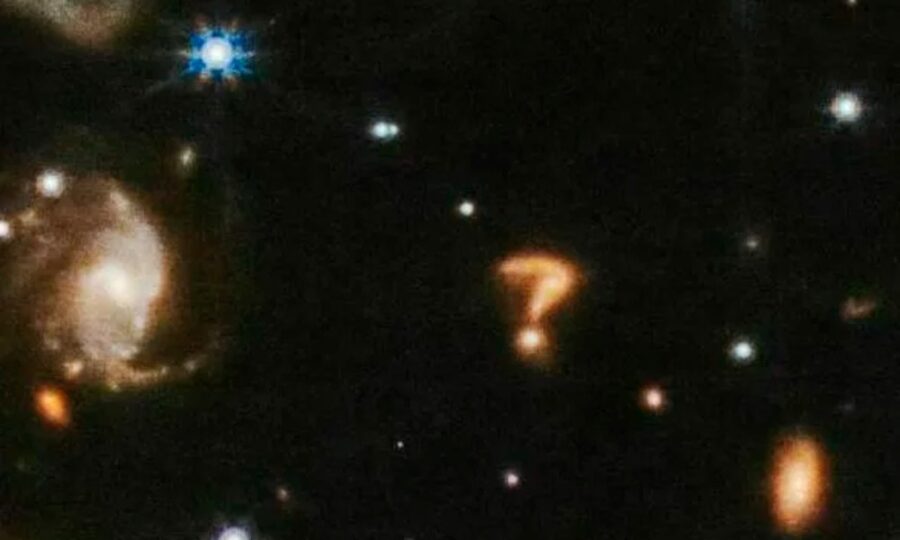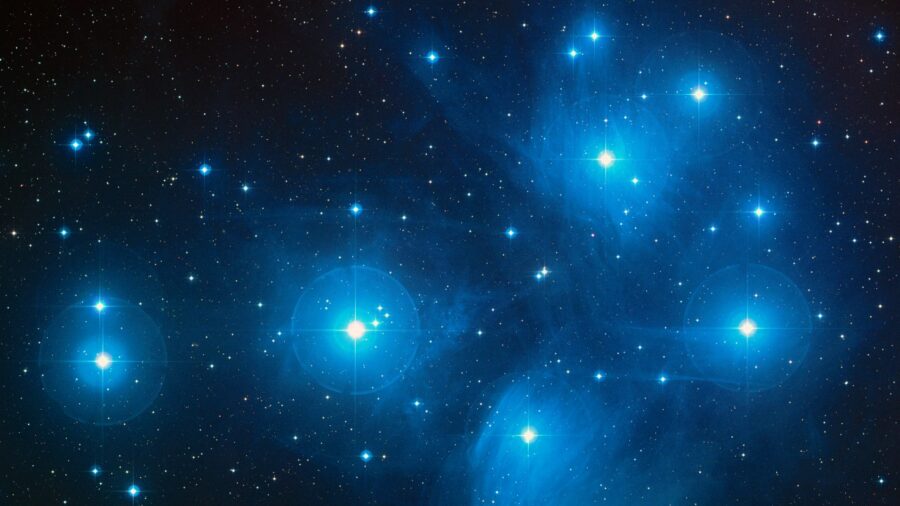The Mystery Behind Deep Space Question Mark Captured By The James Webb Telescope

Myriad mysteries loom in the cosmos, but some are cheekier than others. As reported by NPR, the James Webb Space Telescope captured an image containing a cosmic formation in the shape of a question mark. Though the shape of the so-called space question mark is a coincidence, the picture has sparked intrigue among astronomers.
The James Webb Space Telescope made a stunning discovery in deep space as there’s a question mark, clearly visible, that defies easy explanation.
The stars of the photograph were supposed to be Herbig-Haro 46 and 47. This duo of developing stars is young, giving scientists a chance to observe stars in the early stages of their life cycles. In the photo, gas, and dust swirl around the Herbig-Haro in a colorful display while distant stars and galaxies twinkle all around.
One of those twinklers is the space question mark near the bottom of the image, and it is stealing the Herbig-Haro thunder. Observing Herbig-Haro is a big deal; the celestial bodies are only a few thousand years into the multi-million-year process of becoming a star. Stunning and important as they are, Herbig-Haro 46/47 is tough to focus on.
The space question mark is too far away to be identified with any certainty, but it is speculated to be the chance alignment view of colliding galaxies. “Galactic collisions” sounds like a subject you might overhear Zack Snyder and J.J. Abrams discussing over lunch, but these chaotic processes are relatively common occurrences in the universe.
Even the Milky Way is mingling with the neighboring Andromeda galaxy. Still, catching a glimpse of the phenomenon is always a treat for astronomers. It appears that the main part of the space question mark is composed of a spiral galaxy interacting with another, with a separate galaxy conveniently placed below the punctuation mark’s dot.
Of course, there is not truly a space question mark. The objects forming the shape are being viewed at just the right angle to take a familiar form, but there is no telling how far away these celestial formations are from us or each other. Still, the space question mark comes as a fun addition to a stunning image from Webb.
“I think we all enjoy finding familiar shapes in the sky, that creates a deep connection between our human-experience and language, in this case a question mark, and the beauty of the Universe surrounding us.”
Macarena Garcia Marin, scientist that works on the James Webb Telescope
Thanks to the James Webb Space Telescope, astronomers are glimpsing the vastness of the universe in new and exciting ways. Launched on Christmas Day in 2021, Webb returned its first images just over a year ago. The infrared telescope captures wavelengths that previous equipment, such as the Hubble Space Telescope, have been incapable of registering.

The result has been more detailed images of celestial formations that are dimmer and farther away than any others humanity has ever witnessed. There are exciting discoveries to be made with Webb, and thanks to the space question mark, it seems there is also some fun to be had.
Finding a familiar shape in the sky is a human delight. Macarena Garcia Marin works with Webb as a project scientist for the Space Telescope Science Institute in Baltimore, Maryland. To her, fascination with the space question mark comes as no surprise.
“I think we all enjoy finding familiar shapes in the sky,” she said. “That creates a deep connection between our human-experience and language, in this case a question mark, and the beauty of the Universe surrounding us.”
Constellations are images that humans find in space, making the big dipper and the zodiac signs no different then the giant question mark.
Macarena Garcia Marin continues, “I think this exemplifies the human need for exploration and wonder, and to me it brings the question of how many other interesting objects are out there waiting to be explored with Webb!”
Discoveries will continue as more and more beautiful images pour in from the Webb Space Telescope. As humanity seeks to answer fundamental questions about the universe, the universe seems to be responding with its own admission that there is always another mystery in the vastness of space.












